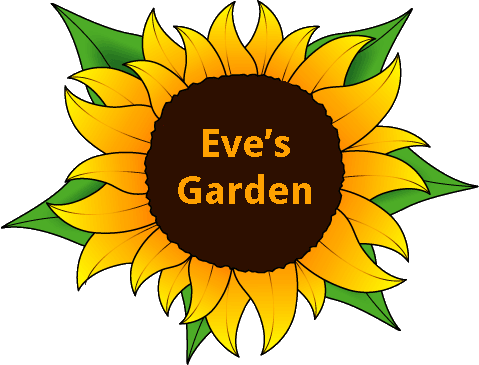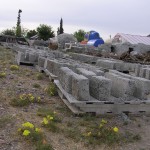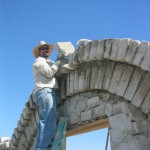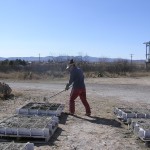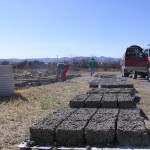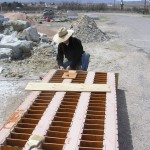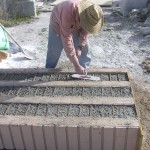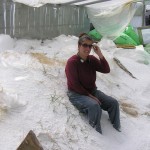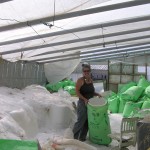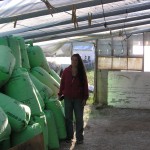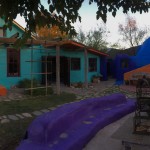At Eve’s Garden Organic Bed and Breakfast we build with different forms of alternative architecture. Primarily we build with Papercrete. Papercrete is a versatile building material comprised of a mixture of recycled paper, sand, clay, and Portland cement –the Portland for the stability and fire resistance. Papercrete is a light-weight, very insulating product. Maximum insulating value is obtained when the dry matrix includes the greatest density of air pockets. High strength is obtained when the paper fiber is thoroughly coated by the Portland cement.
Cellulose (paper) fibers tend to have great porosity and surface area. This allows for a super saturation when paper is immersed in water. The long paper fibers experience a stack effect, giving the matrix body enough to support the Portland cement which then crystallizes on the three dimensional fiber matrix. The water evaporates and voilà — papercrete!
After working in concert for years evesgarden.org, masongreenstar.com and livinginpaper.com would like to offer to the industry our standardized base formulas for the manufacture of papercrete bricks, plaster and mortar. These formulas are designed to insure structural integrity, and exceptional fire resistance in a papercrete building system.
There is considerable reason for concern that a sufficient minimum volume of cement paste be supplied to properly bond and encapsulate the paper fiber in a papercrete mix, thus prohibiting the possibility of incendiary conditions.
Considerable cost and CO2 reductions can be obtained by extending the Portland paste by adding both metakaolin pozzolan clay and perlite aggregate, essentially making mason’s mortar and then adding in the paper fiber.
When I make plaster I put 26 pounds of shredded paper into my concrete mixer, half of sand (25 shovel-fulls), and about 5 minutes of water from the hose and let it soak over night. Then the next day I add one bag of Portland cement, half of a bag of pozzlan clay, and then the other 25 shovel-fulls of sand (total of about 5 cubic feet sand). This produces about three or four wheel barrow fulls of plaster. A whole day’s work!
Here is the full suggested standardized mix for papercrete bricks –
For one cubic yard mix:
2 cubic feet of Portland cement
2/3 cubic foot of metakaolin pozzolan
12 cubic feet of perlite or plaster sand
125 pounds of recycled paper
At Eve’s Garden we have based all of our research on the employment of the standard adobe building system of the American Southwest. Therefore we make several manageable-sized bricks and either mortar them, or dry-stack and surface bond, as has been done with adobe for 3000 years. Our mortars have a phenomenal affinity for our bricks and we have had great success with plastering without the use of stucco net wire. Following sound building practices such as perimeter foundation and load distributing bond beams, along the line of the approved building code for adobe brick construction, yields a strong, energy efficient, super insulated (R40 per foot of thickness) building system.
Architecture and Safety
Most of the structures in the world are made of mud, stones and sticks. Many of these structures collapse in earthquakes and injure or kill people.
Remember the earthquake that struck Turkey in 1999. The domed structure remained standing while most of the other buildings around them collapsed.
Around 100 A.D., Roman builders rotated an arch around its vertical axis and discovered that it creates a strong three-dimensional shape — the monolithic dome.
Papercrete, which has a concrete-like strength, but without the heavy weight of concrete, allows us to return to classical architecture.
Below pictures of the process of making the blocks and shots of some of our domes and arches built as part of Eve’s Garden Bed & Breakfast…
